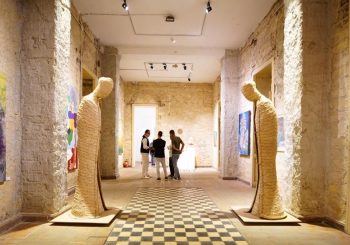By Mustafa Abdel-Halim,* Common Ground News
This August, two young Egyptian musicians released songs on the topic of sexual harassment against women, which has been on the rise since the 2011 uprising in Egypt. These musicians’ songs are two important examples of many similar, serious efforts by artists to help fight this problem.
As the pandemic of sexual harassment continues to deepen, one may ask if artists can effectively play any role in combating it. Some believe that art is peripheral to solving a problem that should be tackled by action not words. However, I do believe that words and images still speak as loud as actions, especially in a country like Egypt with a vibrant and influential artistic community.
Sexual harassment has reached shocking rates in Egypt, with a 2013 report by the United Nations Entity for Gender Equality and the Empowerment of Women reporting that 99.3% of Egyptian women have experienced some form of sexual harassment.
A key component of stopping sexual harassment is to increase awareness. As a BBC correspondent in Egypt for one year, I interviewed many people, hearing consistently that women are to blame for harassment either because of their clothes, style of walking, or behavior for daring not to stay at home awaiting their husband and children. What art can do is to promote alternative messages and transform narratives around harassment.
This is exactly what popular rapper Zap Tharwat and singer Menna Hussein sought to convey in their song released this August. Entitled “Who is responsible,” the song lashes out at society for blaming women while turning a blind eye to the harasser.
The other song, “I won’t blame the harasser” by Abo, stresses that he will not blame the harasser for this epidemic, but rather hold society responsible. The music video follows actress and activist Sarra Abdelrahman as she takes out her anger on a projection of mob harassment in Tahrir Square and TV anchors denouncing the victims of one of the many sexual assaults on women in Tahrir this year.
What is noticeable and interesting in these new songs is that they speak the same language of both the victims and the culprits, who are mostly young people. Zap Tharwat avoids dry and literal warnings to aggressors and instead uses words that are very colloquial and informal. For example, Thawat filmed his video clip in a bus, telling a story of an ordinary girl getting harassed there. In the words of the song, he blamed the passengers for turning a blind eye: “it is a shame that mustaches and beards do not take any action,” the lyrics say. For anyone living in Egypt, this is a colloquial phrase that plays on the sentiments of many ordinary Egyptian men who takes public transportation. He also uses popular words such as Gadaa (gentleman/noble minded in English), a popular literal Egyptian word which reflects a romantic historical image of Egyptian men, reminding them to link this reputation to action by respecting women.
The videos were also first released on the internet, which is easily available to most of the younger generation in Egypt. It is a testament to the resonance of the song that Tharwat himself was able to boast that after less than one week, 500,000 people saw the music video. The words of former famous Japanese actress Nobuko Miyamoto are telling when it comes to assessing the impact of art: “the arts open boundaries among cultures, but also among disciplines, generations, and faiths.”
Artists are role models. They are the ones who can push our boundaries not only in the way we talk or dress, but also in the way we behave. If celebrities are against harassment, hopefully many people will follow suit.
Art is all about constructing, reconstructing, or demolishing what media specialists call “frames.” As these songs and movies demolish the frame that a woman is to blame, they simultaneously construct a new frame of a woman who dares to go to a police station and court to file a case against her harasser.
Art also reconstructs another frame that harassment is not secondary to other political or economic problems in Egypt. Here, art is enabling and empowering for women. Emboldening women to act, art is not just a mirror reflecting society but a driving force to improve it.
Egypt is now witnessing a unique opportunity to marry politics with art: the former based on institutional hierarchy and enforcement models and the latter based on dispersed innovation and collective action. The state has shown some seriousness to combat harassment; for example, a new law issued last June criminalizes sexual harassment.
But this is not enough to change the calculus in a country where public trust in the state is not high. Art complements these state measures among people on the street, regardless of the divisive politics Egypt now witnesses. It can play a central role in changing popular narratives regarding sexual harassment and in encouraging different behavior, thus building a strong and tolerant society.
*Mustafa Abdel-Halim is a London-based broadcast journalist and lecturer at the University of Westminster.






Comments (7)
[…] Zdjęcie: egyptianstreets.com […]
ccn2785xdnwdc5bwedsj4wsndb
[…]we came across a cool web-site which you may possibly love. Take a search in case you want[…]